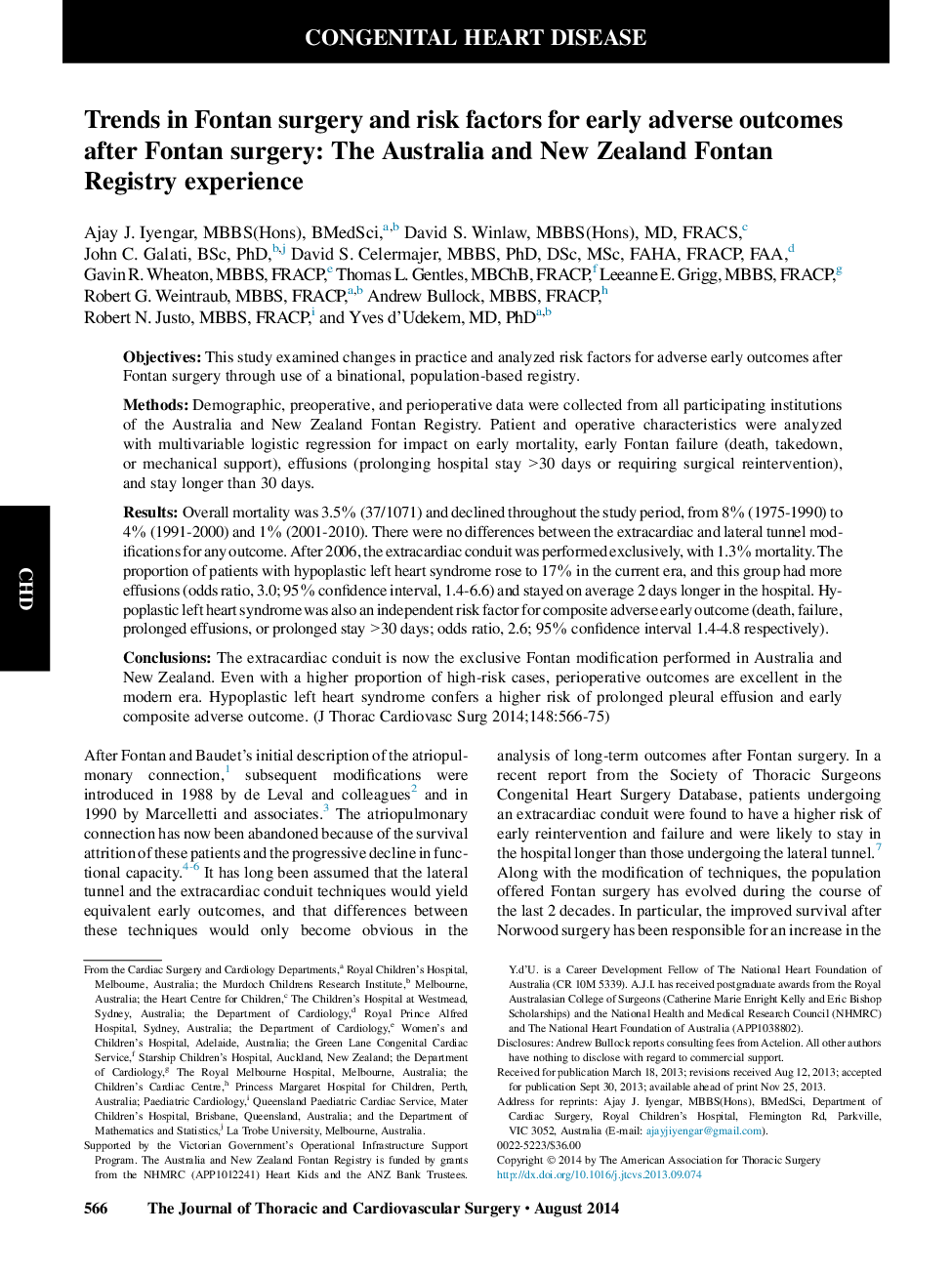| Article ID | Journal | Published Year | Pages | File Type |
|---|---|---|---|---|
| 2980478 | The Journal of Thoracic and Cardiovascular Surgery | 2014 | 10 Pages |
ObjectivesThis study examined changes in practice and analyzed risk factors for adverse early outcomes after Fontan surgery through use of a binational, population-based registry.MethodsDemographic, preoperative, and perioperative data were collected from all participating institutions of the Australia and New Zealand Fontan Registry. Patient and operative characteristics were analyzed with multivariable logistic regression for impact on early mortality, early Fontan failure (death, takedown, or mechanical support), effusions (prolonging hospital stay >30 days or requiring surgical reintervention), and stay longer than 30 days.ResultsOverall mortality was 3.5% (37/1071) and declined throughout the study period, from 8% (1975-1990) to 4% (1991-2000) and 1% (2001-2010). There were no differences between the extracardiac and lateral tunnel modifications for any outcome. After 2006, the extracardiac conduit was performed exclusively, with 1.3% mortality. The proportion of patients with hypoplastic left heart syndrome rose to 17% in the current era, and this group had more effusions (odds ratio, 3.0; 95% confidence interval, 1.4-6.6) and stayed on average 2 days longer in the hospital. Hypoplastic left heart syndrome was also an independent risk factor for composite adverse early outcome (death, failure, prolonged effusions, or prolonged stay >30 days; odds ratio, 2.6; 95% confidence interval 1.4-4.8 respectively).ConclusionsThe extracardiac conduit is now the exclusive Fontan modification performed in Australia and New Zealand. Even with a higher proportion of high-risk cases, perioperative outcomes are excellent in the modern era. Hypoplastic left heart syndrome confers a higher risk of prolonged pleural effusion and early composite adverse outcome.
